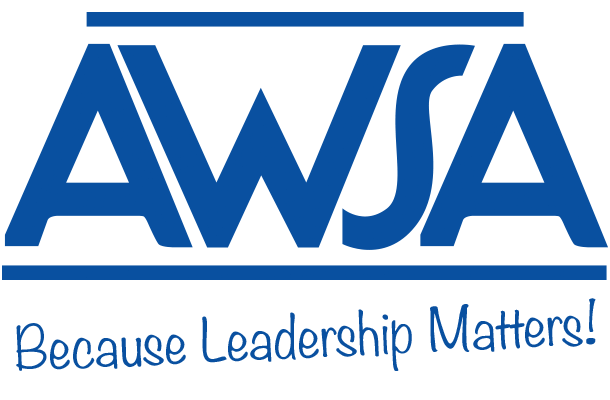School Mental Health Issues
by Beth A. Herman, MSE, Education Consultant Project Coordinator Safe Schools Healthy Students, Coordinator of WI AWARE Youth Mental Health First Aid, Wisconsin Department of Public Instruction Rates of suicide among youth have increased over the last 15 year and as of 2015, it was the second leading cause of death among individuals ages 15-24. In Wisconsin up to 1 in 5 youth experience a mental health disorder in a given year (Perou et al., 2013), and roughly 60% of Wisconsin youth with a major depressive episode did not receive treatment in 2013 (SAMHSA). These behavioral health needs paired with significant shortages of mental health providers in Wisconsin has resulted in serious challenges for youth and families to access timely and effective treatment. These dismal statistics demanded a response. In February of 2016, the Wisconsin Department of Public Instruction released The Wisconsin School Mental Health Framework: Integrating School Mental Health with Positive Behavioral Interventions and Supports. This document, developed with the support of school district staff, Rogers In-Health, the Wisconsin PBIS Network and Community Partnerships provides a guide for the provision of school mental health services. These services are a continuum of supports for school-age children that are integrated with a multi-level systems of support. This framework provides strategies to address mental health from maintaining wellness (universal supports) to addressing behavioral health challenges (tier 2/3). This same year, the Gannett News Agency began a series called Kids in Crisis. These articles, published state-wide, prompted listening sessions and town hall meetings across the state. Families shared real stories of real children lost to suicide. Speakers and participants alike reported frustration in attempting to find help for their children. Mental Health service providers and schools personnel shared their challenges in reaching all children in need. These community forums resulted in 10 significant recommendations: 1. Support Mental Health Clinics in Schools 2. Create a standardized reporting form for suicides. 3. Increase participation in a state survey of youth risk behavior. 4. Assist counties in establishing alternatives to hospitalization 5. Hold counties accountable for delivering public mental health care. 6. Support more training for police to better understand mental health challenges 7. Expand a program for primary care doctors to get advice from psychiatrists 8. Standardize and expand mental health screening in schools 9. Require schools to track and respond to bullying 10. Raise Medicaid payment rates for children’s mental health care. These recommendations made it very clear that addressing the behavioral health needs of children and youth would require a collaborative approach between schools, communities, advocacy groups and governmental agencies. To date, a great deal of action has occurred around these recommendations. The Wisconsin School Mental Health Framework provides schools and communities with a roadmap but many schools are still challenged by the costs to start and maintain school based clinics. To that end, the biennial budget, signed by the Governor in September 2017 allocates 3.25 million dollars to be made available to schools and communities, through a competitive grant program, for the purpose of collaboration between schools and community mental health agencies to provide mental health services to pupils. Additionally, to address school mental health staff shortages, the budget also provides 3 million dollars in categorical aid to allow districts to increase social workers. These funds will come with guidance and supports for communities in establishing these school based mental health services. Many of the recommendations listed above are being addressed. Schools have access to an online Youth Risk Behavior Survey for middle and high school. Guidance and best practices recommendations regarding universal screening are available to schools and districts via the DPI website. To address bullying, schools can access resources to guide them in developing a comprehensive bullying prevention initiative. Located on the DPI website, these resources are free and flexible to meet the unique needs of unique communities. The current state budget also includes funding for a state non-profit provider of a K-8 anti-bullying curriculum. While these funds do not go directly to schools this financial support will make this curriculum more accessible to K-8 staff. At the local level, communities and county agencies, through the Collaborative Services Team (CST) Initiative, work to develop and carry out a coordinated services plan for the child. These wrap around services reduce the number of emergency mental health detentions for youth in a behavioral health crisis and can divert youth from the Juvenile Justice system and into appropriate behavioral health treatment. Linking schools to their community mental health resources can improve access to treatment for a number of youth and families. In this recent budget the Governor also increased funding for the Psychiatry Consultation Program providing primary care physicians with access to child psychiatrists for treatment consultation to address the access challenges to specialized medical support many communities face. The governor and legislature also recognized the need to support adults who are serving youth. This budget included 1 million dollars in additional funds appropriated for training of adults in Youth Mental Health First Aid, Trauma Informed Practices and Screening, Brief Intervention, and Referral to Treatment (SBIRT). All are evidence based practices. Changes to Medicaid reimbursements are also occurring at the state level. There is movement to increase the Medicaid reimbursement rate for mental health providers and just recently, a measure to allow mental health providers to be reimbursed for consultation time with school staff was approved. This change compensates community providers for the time they spend consulting and meeting with school staff. This level of collaboration between school and therapist provides continuity of care for the student and family and creates a more seamless approach to treatment. A number of Wisconsin schools have moved to respond to the behavioral health challenges in their communities. They have developed collaborative relationships with their community providers developing on-site mental health services and created clear referral processes and procedures that ensure that students get to the recommended treatment resources. Parent Peer Support Specialists have provided guidance and support in assisting families to access multiple systems (medical, behavioral health, juvenile justice, schools and special education) offering the wisdom gained from their lived experience. All of these resources, adapted to address local needs, are the real life “how to” schools just beginning the journey are looking for. The Wisconsin Department of Public Instruction collects this information for other Wisconsin schools to begin this work. The data are very clear that Wisconsin has significant challenges in identifying children and youth with significant behavioral health needs and in providing timely and effective treatment to those youth. The good news is that in the face of these stark statistics, the citizens of Wisconsin have come together. Their advocacy shone a light on a problem that could not be ignored, and state governments, advocacy groups, schools and communities stepped up, in a big way, to begin addressing the problem.
Read more at: Elementary Edition - Secondary Edition - District Level Edition |

